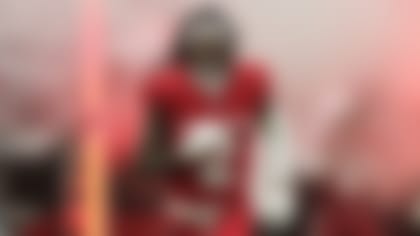NFL coaches are copycats by nature, so they recently have looked toward the college game to steal an innovation that's turning quarterbacks into stars.
Fueled by the success of college powerhouses Florida, Texas, Ohio State and Oklahoma, pro teams are beginning to incorporate elements of the spread offense into their playbooks.
The spread, a shotgun-based offense that features many four-receiver sets and empty formations, has become the system of choice in the high school and college ranks because of its ability to create mismatches in space. Some teams also incorporate a triple-option element that's problematic for defenses.
With the endless variations that accompany the spread, it isn't surprising that nearly half of the teams in BCS conferences run some form of the scheme. And that number is sure to increase with spread teams dominating the top of the offensive rankings.
Given the impact and overwhelming success of the spread on the college level, it was only a matter of time before savvy NFL coaches started to study the offense and implement some of the basics into their game plans.
Look at any NFL game each week, and the bubble screen, shovel pass or zone-read will pop up throughout the course of the contest. While those plays existed long before the spread became the rage, the innovative system has made them hallmarks of the offense. And their big-play potential has led to their incorporation into most NFL game plans.
Two seasons ago, the New England Patriots shattered several league records using spread-offense basics as part of their game plan. Their countless quick screens to wide receivers Wes Welker and Randy Moss were taken right from the pages of a spread offense's playbook. Moreover, the team's use of the shovel pass and fly sweep reflect a strategy that has roots in the offense.
However, gimmicks and tricks aren't the reason that NFL teams are rushing to add the spread to their offensive packages. The scheme is quarterback-friendly by design, and teams see the benefit of spreading the field with four-receiver personnel packages and empty sets.
By opening up the offensive formation, quarterbacks have an easier time identifying potential rushers, and the spread's premise of stretching defenses horizontally is the perfect counter to the blitz-heavy approach favored by most defensive coordinators. The sideline-to-sideline passing game also gives quarterbacks the ability to stretch the field while still making high-percentage throws.
But the X's and O's aren't the only reason that teams are implementing key elements of the spread. It's designed to quickly get the ball into the hands of the team's top playmakers so they can use their speed and athleticism to make big plays in the open field.
This approach isn't only sensible, but it alleviates some of the pressure on the quarterback to function as a playmaker. Matt Cassel's phenomenal 2008 season can be attributed to the Patriots' willingness to extensively use the spread concept until he became more comfortable executing the team's full offensive package.
The Kansas City Chiefs are another team that extensively used the spread offense to help a young quarterback succeed as a starter last season. The team went to a no-huddle, shotgun-based scheme with Tyler Thigpen under center the last 10 games of the season. Thigpen, who directed a spread offense at Coastal Carolina, thrived in the scheme during the latter part of the year, completing 58.1 percent of his passes for 16 touchdowns with just eight interceptions after former offensive coordinator Chan Gailey moved to it full-time. Moreover, Thigpen posted a passer rating over 80.0 in eight of those 10 starts.
The influx of athletic quarterbacks into the NFL also makes the use of some spread concepts a viable plan. Vince Young, Dennis Dixon and Pat White enjoyed stellar college careers as dual-threat spread quarterbacks, and their respective pro teams have used some of their favorite plays from the offense to make them comfortable.
Young ran several zone-read runs and play-action passes during his sensational rookie season with the Tennessee Titans. Though the plays were used sparingly, they helped Young grow acclimated to the pro game and propelled the former University of Texas star to the 2006 NFL Offensive Player of the Year award.
With so many quarterbacks entering the NFL having spent their entire college (and high school) careers in the spread, adding elements of the system enables teams to quickly get those players on the field. It also accelerates the transition of the spread quarterbacks set to embark on pro careers.
With Florida's Tim Tebow, Oklahoma's Sam Bradford and Texas' Colt McCoy headlining the 2010 draft class, the decision to incorporate some spread principles comes at just the right time for NFL teams. Tebow, Bradford and McCoy are three of the most prolific quarterbacks to play in college, and their extensive experience directing a spread offense could be problematic for pro teams unfamiliar with scheme.
The league's best coaches always have been lauded for their ability to meld their schemes around the strengths of their players, and the use of the spread is another example of play-callers trying to maximize the talent available at quarterback.





